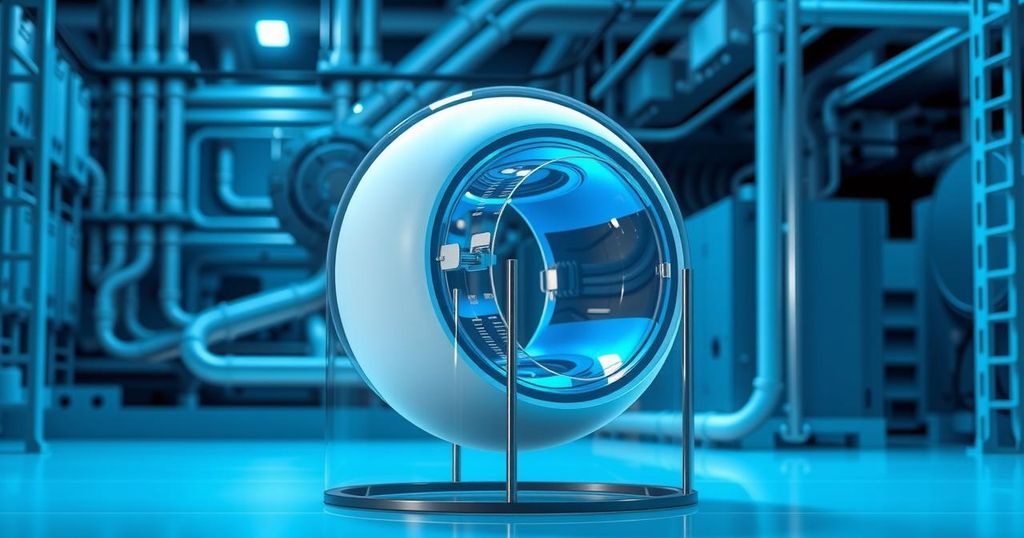Brazil Advances National Microreactor Development Initiative

Brazil’s CNEN is developing microreactors to provide energy to remote areas, supported by IPEN and IEN. The project aims to create domestically produced core components, focusing on a low-power nuclear microreactor. With a budget of BRL50 million, the initiative spans three years and aims to develop a unique national solution for energy generation without dependence on foreign technology.
Brazil’s National Nuclear Energy Commission (CNEN) is spearheading an initiative to develop microreactors aimed at reducing reliance on diesel generators in remote areas and small communities. This project, driven through the Institute of Energy and Nuclear Research (IPEN) in Sao Paulo and the Institute of Nuclear Engineering (IEN) in Rio de Janeiro, received backing from the Financier of Studies & Projects (Finep).
IPEN’s responsibilities include researching and developing essential materials for the microreactor, such as moderators and control rods, with an emphasis on domestic production for stability. The institute is also exploring nuclear fuel development, especially involving larger uranium dioxide (UO2) diameters, to create a competitive supply chain.
Researcher Jesualdo Luiz Rossi highlighted that IPEN’s past expertise with beryllium oxide will be crucial in this project. He stated that, “IPEN’s involvement with beryllium dates back to the 1960s and 1970s… However, this technical knowledge has been lost over time.” This presents an opportunity to restart work in this area by establishing a new lab equipped for safe handling of toxic materials.
The IEN will build upon historical research from the 1970s for the subcritical reactor unit, as noted by Francisco Jose de Oliveira Ferreira, who said, “IEN has been working on a subcritical unit project for many years and this was resumed in 2018.” The focus will be on neutron behavior and validating theoretical calculations through experimental tests.
The project, entitled “Development and testing of critical technologies applicable to nuclear microreactors,” is part of the Finep More Innovation programme, with a budget of BRL50 million ($8.8 million). The main proponents include Diamante Geração de Energia, INB, and Terminus Pesquisa e Desenvolvimento em Energia, alongside numerous universities and institutions.
The initiative is supported by the Nuclear Development Directorate of the Brazilian Navy and other defense organizations. It spans three years, aiming for a low-power microreactor capable of generating 3 MWe, operable for over ten years without refueling. CNEN emphasized the distinctiveness of Brazil’s approach in creating a homegrown solution differing from adaptations of international technologies.
Professor Joao Moreira, technical coordinator from UFABC, remarked, “As yet, there is no microreactor operating in the world with established technology… we are developing something original.” Project coordinator Adolfo Braid pointed out that IPEN’s established nuclear tradition will be instrumental in supplying necessary components such as the reactor core and control systems.
Essential components, including a heat transfer system and instrumentation for safety, will also be developed. Currently at technology readiness level (TRL) 3, the project seeks to advance to TRL 6, transitioning from preliminary studies to practical applications.
To facilitate this advancement, four Technology Development Units will be created for critical testing, including low power operations and validation of systems. Coordinating across various research entities will pose management challenges which CNEN plans to address through efficient software for real-time task management and planning optimization.
The microreactor project in Brazil is poised to foster innovation in energy generation by reducing dependency on diesel fuels. By leveraging historical knowledge and the collaboration among multiple institutes, the initiative aims to create a specialized, nationally developed nuclear technology. The structured plan and funding illustrate a commitment to advancing energy solutions that could greatly benefit remote communities over the coming years.
Original Source: www.neimagazine.com








